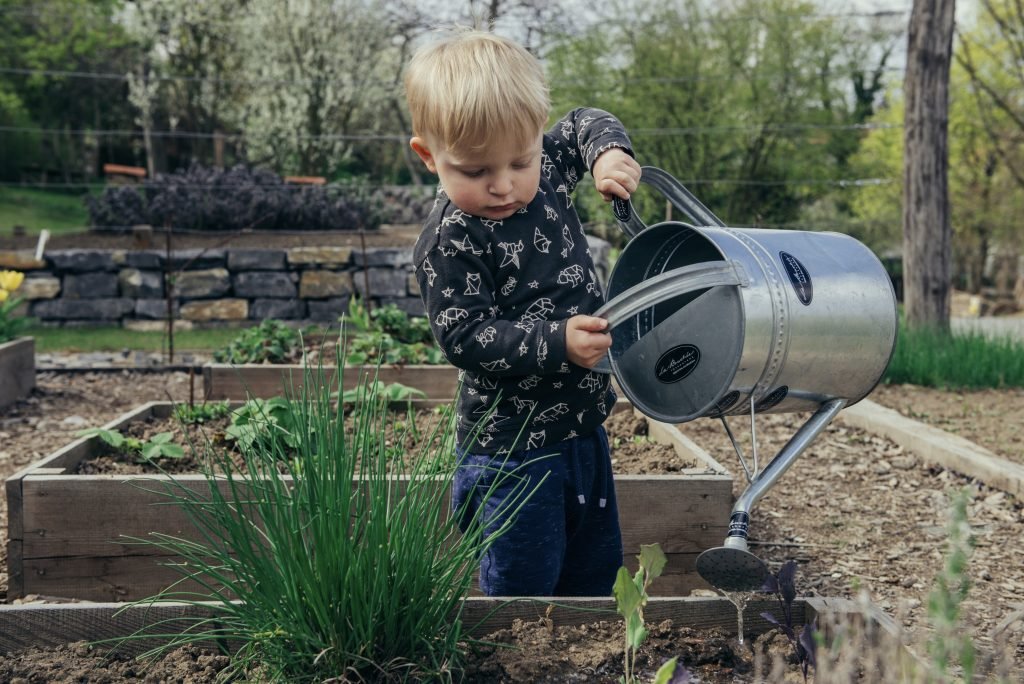Creating a sustainable and efficient home garden is not only rewarding for you but also beneficial for the environment. By adopting eco-friendly practices, you can cultivate a hearty garden that thrives without depleting resources. You’ll discover ways to optimize water usage, choose native plants that require less maintenance, and even compost household waste to enrich your soil naturally. This article delves into practical tips and techniques to help you transform your garden into an oasis of sustainability, where beauty and efficiency coexist harmoniously. Have you ever found yourself admiring the lush beauty of a well-maintained garden and thought, “How can I create a sustainable and efficient home garden?” Well, you’re not alone! Many people dream of transforming their outdoor space into a thriving garden that not only looks great but also supports the environment. The good news is that it’s entirely achievable, even if you’re a beginner. Let’s dive into the steps and tips that will help you make your garden a sustainable and efficient paradise.
What is a Sustainable Home Garden?
A sustainable home garden utilizes resources responsibly to minimize environmental impact, reduces waste, and supports a healthy ecosystem. It can be a source of fresh produce, foster local wildlife, and even reduce your carbon footprint. By focusing on sustainability, you’re helping to preserve natural resources for future generations.
Benefits of a Sustainable Garden
- Environmental Impact: Reduces carbon footprint and limits the usage of harmful chemicals.
- Cost-Effective: Saves money in the long run through reduced water, energy, and grocery bills.
- Healthier Lifestyle: Provides organic produce and promotes physical activity.
- Biodiversity: Supports local wildlife and promotes a balanced ecosystem.
Planning Your Garden
Before you start digging and planting, it’s crucial to have a well-thought-out plan.
Assess Your Space
First things first, analyze your yard. Determine the space available for your garden and check for factors like sunlight, soil type, and accessibility.
- Sunlight: Identify areas that receive full sun (6-8 hours), partial sun (4-6 hours), or shade (less than 4 hours).
- Soil Type: Is it sandy, clayey, or loamy? Analyzing soil composition will help you choose suitable plants.
- Accessibility: Ensure the garden is easily accessible for watering, pruning, and harvesting.
Design Your Garden Layout
Once you’ve assessed your space, sketch a layout. Consider incorporating paths for easy movement, zones for different types of plants, and spaces for composting and rain barrels.
| Zone | Purpose | Tips |
|---|---|---|
| Veggie Patch | Growing vegetables and herbs | Place in full sun and near water source. |
| Flower Bed | Aesthetic appeal and pollinators | Mix perennials and annuals for continuous blooms. |
| Compost Area | Waste decomposition | Locate away from living spaces to avoid odor. |
| Rain Harvesting | Collect rainwater | Position under gutter downspouts for maximum capture. |

This image is property of images.pexels.com.
Choosing Plants Wisely
Selecting the right plants is essential for a sustainable garden. Choose native plants and drought-resistant varieties to reduce water usage and support local wildlife.
Native Plants
Native plants are adapted to your region’s climate and soil, making them easier to care for and more sustainable.
Drought-Resistant Plants
These plants require less water, making them perfect for areas prone to droughts.
| Category | Examples |
|---|---|
| Vegetables | Tomatoes, Peppers, Zucchini |
| Herbs | Thyme, Rosemary, Sage |
| Flowers | Lavender, Yarrow, Coneflower |
| Shrubs | Manzanita, Toyon, Sagebrush |
Sustainable Gardening Practices
Implementing sustainable practices will help your garden thrive with minimal impact on the environment.
Soil Health
Healthy soil is the foundation of a sustainable garden. Focus on enriching your soil with organic matter and avoiding chemical fertilizers.
- Composting: Use kitchen scraps, yard waste, and fallen leaves to create nutrient-rich compost.
- Mulching: Add a layer of organic mulch to retain moisture, suppress weeds, and improve soil quality.
Water Conservation
Efficient water use is crucial for sustainability.
- Drip Irrigation: Uses less water and delivers it directly to the plant roots.
- Rain Harvesting: Collect rainwater in barrels to reduce dependency on tap water.
- Soaker Hoses: Lays on the ground and seeps water slowly, reducing evaporation and runoff.
Pesticide and Herbicide Alternatives
Avoid chemical pesticides and herbicides to protect beneficial insects and local biodiversity.
- Natural Predators: Encourage birds, bats, and beneficial insects to keep pest populations in check.
- Homemade Remedies: Use garlic spray, neem oil, or insecticidal soap as natural alternatives.
Crop Rotation
Rotating crops annually helps prevent soil depletion and reduces pest build-up.
| Year | Plot A (Sun) | Plot B (Shade) | Plot C (Partial Sun) |
|---|---|---|---|
| 1 | Tomatoes | Leafy greens | Beans |
| 2 | Beans | Tomatoes | Leafy greens |
| 3 | Leafy greens | Beans | Tomatoes |

This image is property of images.pexels.com.
Enhancing Biodiversity
A diverse garden is a resilient one. Encourage different species to thrive in your garden.
Pollinator Gardens
Planting flowers that attract bees, butterflies, and other pollinators is essential.
- Bee-Friendly Plants: Sunflowers, lavender, and bee balm.
- Butterfly Attractors: Milkweed, lantana, and zinnias.
Supporting Wildlife
Create habitats to attract birds, beneficial insects, and small mammals.
- Birdhouses and Feeders: Install these to attract birds that can help control pests.
- Water Features: Small ponds or birdbaths provide water for wildlife.
Efficient Garden Maintenance
Maintaining your garden efficiently ensures it remains productive and sustainable.
Seasonal Tasks
Keep a calendar of essential garden tasks for each season.
- Spring: Plant new seeds, prune plants, apply compost.
- Summer: Water consistently, mulch, harvest crops.
- Fall: Collect seeds, compost leaves, prepare beds for winter.
- Winter: Protect plants with covers, plan for next year, maintenance.
Tool Care
Taking good care of your gardening tools is essential for efficiency.
- Cleaning: Remove dirt and sap after use.
- Sharpening: Keep blades sharp for effective pruning.
- Storage: Store tools in a dry place to prevent rust.

This image is property of images.pexels.com.
Reducing Waste
Minimizing waste in your garden contributes to its sustainability.
Composting
Create a compost bin to recycle organic waste. Composting not only reduces waste but also provides nutrient-rich soil.
Upcycling
Reuse materials like old containers, pallets, and tires as plant beds or décor.
| Item | Upcycling Idea |
|---|---|
| Old Tires | Raised garden beds |
| Wooden Pallets | Vertical gardens |
| Glass Jars | Seed starters or herb containers |
Avoiding Single-Use Plastics
Opt for reusable or biodegradable options instead of single-use plastic items.
Conclusion
Creating a sustainable and efficient home garden is a rewarding endeavor that benefits both you and the environment. By planning ahead, choosing the right plants, and implementing sustainable practices, you’ll be well on your way to growing a garden that thrives year after year. Remember, every small step you take towards sustainability makes a significant difference. So, roll up your sleeves, get your hands dirty, and start creating the garden of your dreams! Happy gardening!




